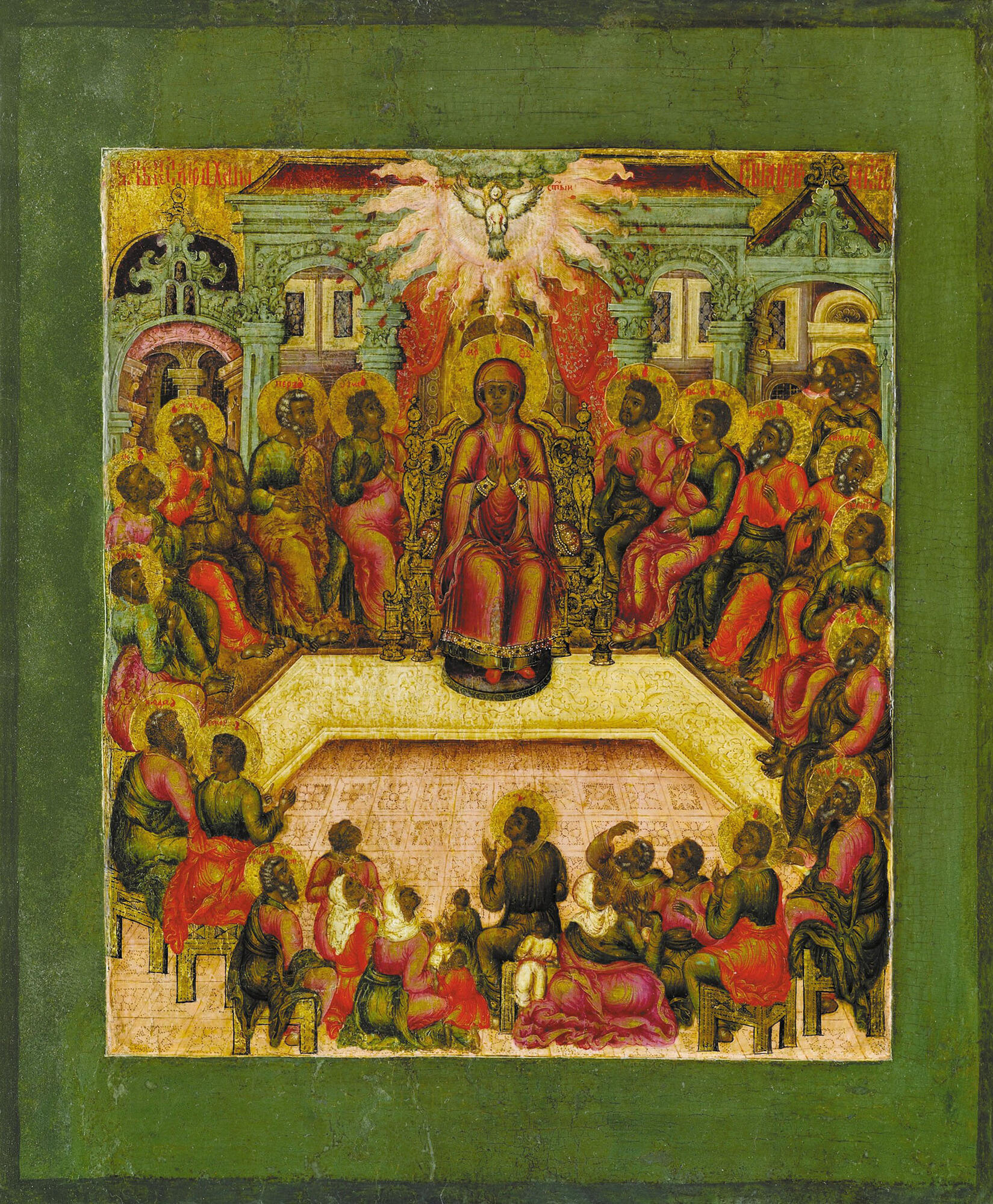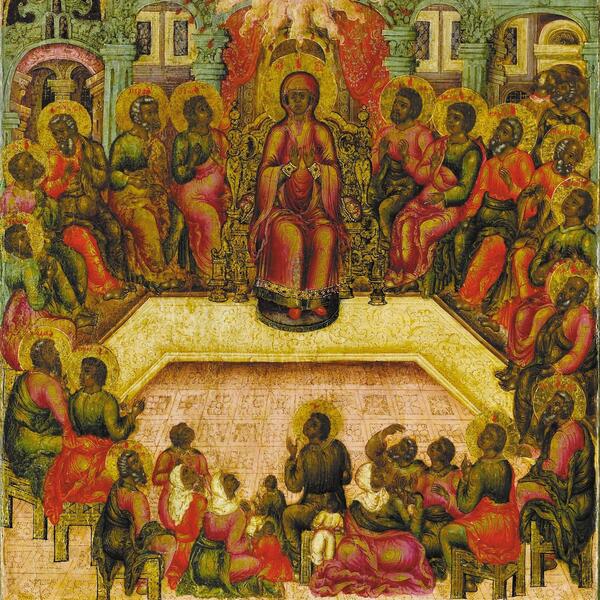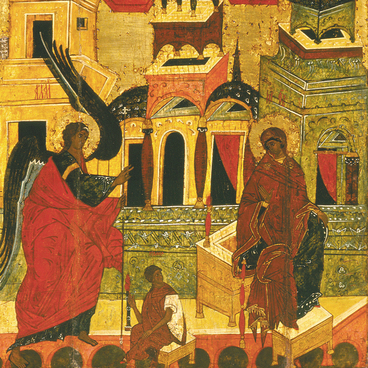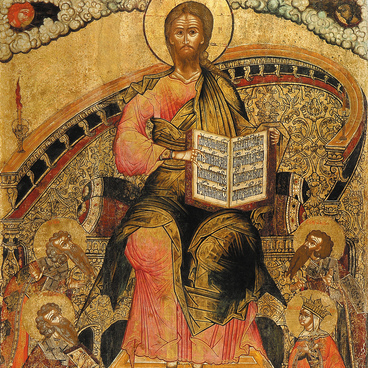Pentecost is one of the main Christian holidays that commemorates the descent of the Holy Spirit upon the apostles. Its name was borrowed from the Jewish festival that marked the revelation of the Torah at Mount Sinai. For the New Testament Church, it is important as the establishment of the sacrament of holy orders.
On the 50th day of the Resurrection of Christ, the apostles and the Virgin Mary came together in the Cenacle on Mount Zion, and the Holy Spirit descended upon them in the form of cloven tongues of fire. Each of them touched one of the disciples. Having received the Holy Spirit, the apostles started praising God in a multitude of languages. Those attracted by the noisy gathering came to the house, marveled at what was going on, and made fun of the apostles, thinking that they had drunk too much sweet wine. The apostles came outside, and the Apostle Peter quoted Prophet Joel who had said that those blessed by the Holy Spirit would become prophets. This event made many people believe in God and adopt Christianity.
The iconography of the feast was initially established in Greece, Byzantium, and Russia in the 6th century. Back then, the icon depicted the triclinium as the stage of the event. At the top, there were the apostles Peter and Paul (the Mother of God was not depicted), and all the disciples were portrayed raising their hands in a blessing gesture or holding scrolls. Streams of sun, or, sometimes, tongues of fire, were depicted streaming down from the sky. The dark arch below showed people who had come to the Cenacle (or, in a broad sense, to Christianity). Some icon painters depicted two or three figures, some painted black people, while others even painted humans with heads of dogs and an inscription “all people”. This was interpreted as the Church being open to all people on Earth. Later, a figure of a king appeared which symbolized the entire world. Sometimes, there was an inscription next to him, saying, “Cosmos”. In other icons, Jews were also shown near an overthrown altar, symbolizing the end of the Old Testament kingdom.
According to Saint Luke, the Virgin Mary prayed together with the apostles and served as an apostle herself. This is why she was later depicted at the top of the gathering (in Russian and Byzantine icon painting — since the 17th century). Paul the Apostle, on the other hand, was no longer portrayed in this icon: according to the Bible, he was not present on that day, while earlier icon painters compromised historical truth for a more global vision of the event.
Other changes were also made to the composition: the triclinium was replaced by chambers, the dark arch was no longer depicted, and the people who had come to the Cenacle were simply shown standing below.
In the 1680s, this icon used to belong to the Feast tier of the iconostasis in the side altar of Barlaam of Khutyn, which was located at the Church of Elijah the Prophet. It is believed that the icon was painted by the artists from the Brotherhood of Gury Nikitin. Six works out of ten have survived, while the others are known from historical records.
On the 50th day of the Resurrection of Christ, the apostles and the Virgin Mary came together in the Cenacle on Mount Zion, and the Holy Spirit descended upon them in the form of cloven tongues of fire. Each of them touched one of the disciples. Having received the Holy Spirit, the apostles started praising God in a multitude of languages. Those attracted by the noisy gathering came to the house, marveled at what was going on, and made fun of the apostles, thinking that they had drunk too much sweet wine. The apostles came outside, and the Apostle Peter quoted Prophet Joel who had said that those blessed by the Holy Spirit would become prophets. This event made many people believe in God and adopt Christianity.
The iconography of the feast was initially established in Greece, Byzantium, and Russia in the 6th century. Back then, the icon depicted the triclinium as the stage of the event. At the top, there were the apostles Peter and Paul (the Mother of God was not depicted), and all the disciples were portrayed raising their hands in a blessing gesture or holding scrolls. Streams of sun, or, sometimes, tongues of fire, were depicted streaming down from the sky. The dark arch below showed people who had come to the Cenacle (or, in a broad sense, to Christianity). Some icon painters depicted two or three figures, some painted black people, while others even painted humans with heads of dogs and an inscription “all people”. This was interpreted as the Church being open to all people on Earth. Later, a figure of a king appeared which symbolized the entire world. Sometimes, there was an inscription next to him, saying, “Cosmos”. In other icons, Jews were also shown near an overthrown altar, symbolizing the end of the Old Testament kingdom.
According to Saint Luke, the Virgin Mary prayed together with the apostles and served as an apostle herself. This is why she was later depicted at the top of the gathering (in Russian and Byzantine icon painting — since the 17th century). Paul the Apostle, on the other hand, was no longer portrayed in this icon: according to the Bible, he was not present on that day, while earlier icon painters compromised historical truth for a more global vision of the event.
Other changes were also made to the composition: the triclinium was replaced by chambers, the dark arch was no longer depicted, and the people who had come to the Cenacle were simply shown standing below.
In the 1680s, this icon used to belong to the Feast tier of the iconostasis in the side altar of Barlaam of Khutyn, which was located at the Church of Elijah the Prophet. It is believed that the icon was painted by the artists from the Brotherhood of Gury Nikitin. Six works out of ten have survived, while the others are known from historical records.




